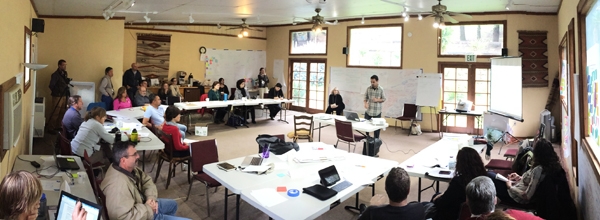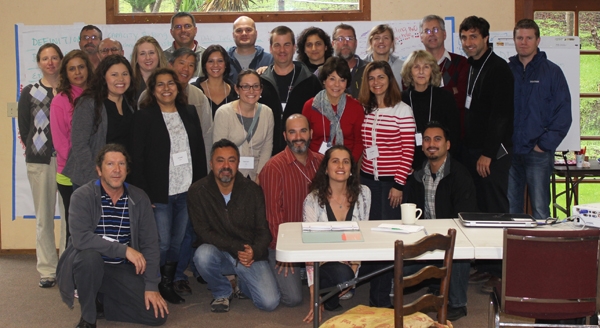The California drought has shined a spotlight on stories of people and communities living without water. Unfortunately, lack of access to clean and affordable water is not a new issue. Water security has been an enduring challenge across the state in wet and dry years alike, particularly for disadvantaged communities. Trying to meet concerns about water availability and affordability with pragmatic action is where things get both complicated and interesting.
One approach that the state has invested a great deal in exploring is known as integrated regional water management. While it is a complex topic, the basic idea is that there are multiple needs for water throughout the state, that reconciling those needs is best done through cooperation, and that some issues are better addressed at the regional level rather than the federal, state, or local scale.
A potential advantage of the regional approach is that socioeconomically disadvantaged communities (defined by California law as those where the median household income is below 80 percent of the statewide median household income) might be able to leverage their limited resources on big issues like water contamination or supply. Carolina Balazs, a researcher at UC Davis, notes that “A single community of 300 residents that earn $15,000 a year simply doesn't have the revenue base to draw on for water system improvements.” At the same time, these communities sometimes struggle to participate in the planning process because they are often newcomers. Consequently, disadvantaged communities don't always benefit from state resources available for cooperative water projects.
Balazs has worked with several communities to understand how disadvantaged groups can come to the table and ensure their input is considered in these regional efforts, while also strengthening the overall process and outcomes. She says that “without an inclusive process and regional focus, the web of interconnections between all types of water users and the impact one user can have on another is less visible, and has serious impacts for long-term, sustainable, equitable water management.”
To determine how the state might enable broad, inclusive participation in regional water planning processes, Balazs, together with Jonathan London, a UC Davis professor, used what is known as a social learning framework to analyze several pilot projects funded by the California Department of Water Resources. The researchers examined whether projects emphasizing the needs of disadvantaged communities led to new learning among various water users and the impacts that new knowledge might have on the water management institutions. Ultimately, they sought to understand the potential of these pilots in developing more effective and equitable water management.
What they are finding is that bridging or boundary organizations – those that link people and institutions that may not be directly connected – play an important role in catalyzing change across the state. In the case of regional water management, they found that the work of non-governmental organizations focused on environmental justice have been instrumental in engaging both communities and agencies in an important co-learning process. For example, Balazs and partner groups convened a valuable workshop that resulted in a set of formal, specific recommendations for state agencies. She says that the convening simply would not have been possible without the investment by several environmental justice groups working closely together.
On a related note, Balazs remarked that one surprise for her in the research process has been the importance of putting time and effort into building trusting relationships between communities, non-governmental organizations, and government agencies. Those relationships led to new opportunities for the environmental justice community to interact with state representatives. That, in turn, helped representatives to better recognize the depth of issues faced by disadvantaged communities and, ultimately, how to move toward a more inclusive and equitable regional water management process. Despite these general findings, it has also been important to identify the differences between various pilot regions. For example, Balazs notes “we're finding that a deep consideration of the historical context of each region is also necessary to understand the successes and failures of each pilot project.”
One of the most exciting aspects of this research project has been “bridging the fields of integrated regional water management and political ecology to push the thinking on how best to incorporate social equity into water management,” says Balazs. While there is still more work to be done, she and her colleagues feel fortunate to be playing a role in the long-term effort to achieve equity in access to safe and affordable drinking water for California communities.
This research was supported in part through a grant to Carolina Balazs and Jonathan London with the University of California, Davis from the California Institute for Water Resources in the University of California's Division of Agriculture and Natural Resources.

